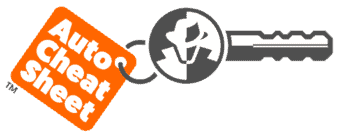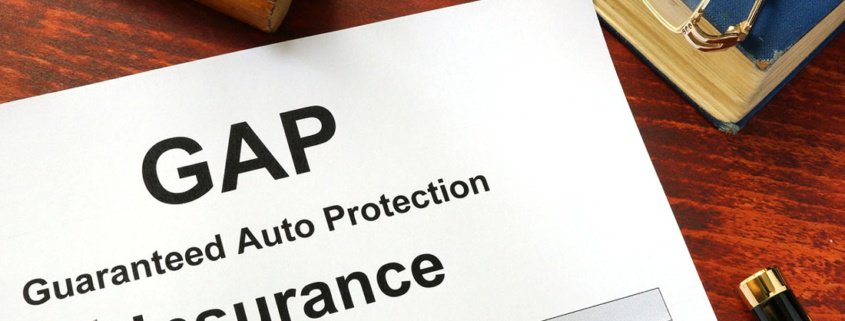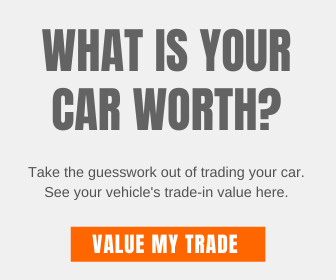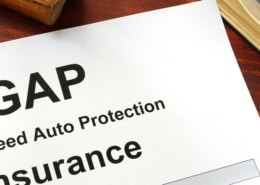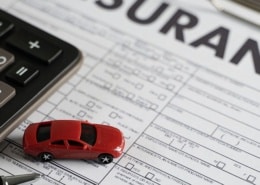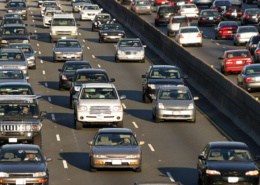What is GAP Insurance?
GAP or Guaranteed Auto Protection is an optional insurance policy available in most states from car dealerships, lending institutions, or automobile insurance companies.
Many car buyers don’t realize the financial danger looming during the first few years while financing a car. Suppose you don’t have the right insurance coverage and GAP insurance. You can do damage to your financial well-being. GAP coverage is not for everyone.
However, it can protect you from paying thousands of dollars if your vehicle becomes a total loss.
What is GAP Insurance?
GAP is short for “Guaranteed Auto Protection” or “Guaranteed Asset Protection.” GAP insurance is an optional insurance policy available in most states from car dealerships, lending institutions, or automobile insurance companies.
GAP covers any additional amount (generally up to $5000) over what an insurance company would pay if your vehicle becomes a total loss. Some GAP policies will even pay your car insurance deductible if your vehicle is deemed a total loss.
Most insurance companies will only pay up to a certain amount if your vehicle is totaled. This amount may be less than what you still owe on the car.
If you owe more than the vehicle’s worth, you’ll still have a deficient balance with the lender for which you will be responsible. This is where a GAP insurance policy comes in, covering the “GAP” so you don’t have to worry about paying anything out of your pocket and can concentrate on replacing your totaled car.
Most car dealers will attempt to sell you an over-priced GAP policy as an add-on product while you’re in the finance department signing the paperwork on your vehicle. GAP can be sold as a separate product or packaged with several backend products such as auto warranties or credit life and disability insurance.
Did you know?
- GAP insurance is an additional product offered in the finance department of a car dealership.
- If your vehicle is a total loss, it will cover the difference between the loan amount and the actual cash value of a vehicle if you owe more than it’s worth.
- Suppose you’re contemplating purchasing GAP from the car dealer. Ask the finance manager to explain the coverage’s terms and conditions. Suppose you’re interested in buying the policy. Tell him you’re willing to pay $50 over the dealer’s cost and have him show you his cost sheet. He will have no problem selling you GAP insurance at this price because he gets paid not only on commission, but bonus’s for how many actual policies he sells.
How GAP Insurance Works
Every day thousands of vehicles are declared a “total loss” by insurance companies. These vehicles are involved in accidents, stolen, or in some other kind of catastrophe.
An insurance company will only pay the “book value” or actual cash value (ACV) on a total loss vehicle claim; if the driver owes more on his vehicle than what the car’s worth, they will be responsible for paying off the difference out of pocket. If the individual is fortunate enough to have GAP insurance, they will not have to worry about the deficit to the bank or lender.
How You Can Fall Into the GAP
- You buy a car from a dealer that lists for $26,000. After tax, title, and license, the total cost you pay is $28,000.
- You put $1,000 down and now owe $27,000.
- You finance the car for 60 months.
- Your payments are $450/mo at 0%.
- You acquire comprehensive and collision (full coverage insurance) with a $500 deductible.
- A year into your purchase, you have an accident. You walk away without a scratch, but your car is declared a total loss by your insurance company.
- Many factors determine the depreciation of a new car. For this example, I’m using 30%.
- The insurance company determines your vehicle’s actual cash value is $18,200, but you still owe a balance of $21,600.
- The above leaves a $3,400 difference between what the insurance company paid and what you still owe the lender.
Someone is still responsible for paying the $3,400 difference plus the $500 deductible in the example above. Can you guess who that someone is? That’s right; it’s you!
You can see where this can be a huge financial burden if you don’t have GAP coverage. Some GAP policies will even pay your insurance deductible for you.
Side note: What if you rolled a few thousand dollars of negative equity from your previous vehicle into the new car? The deficiency amount you’re responsible for would be even higher. Everyone is in a different financial situation, and GAP insurance is a necessary purchase for some people.
Deciding not to pay the deficiency balance, the lender will report your failure to pay to the credit bureaus. Ultimately this will hurt your credit history and you will become a higher credit risk and pay higher rates the next time you apply for any credit lines or loans.
GAP May Be Included When Leasing a Car
GAP insurance may be included in the lease agreement when you lease a new car from a manufacturer. Suppose you’re leasing a new vehicle. Ask the finance manager if GAP is included within your lease agreement.
Always read the terms and conditions listed on the actual GAP contract. You will want to know the pertinent details and the total amount the policy actually covers. Most GAP policies will only cover up to $5000, and some will cover your insurance deductible also.
When Should You Consider Buying GAP?
Little or no money down – If you plan on financing your next car and putting very little down or $0 down, you will most likely be a candidate for GAP insurance. When you only put a minimum amount down when buying a new car, you tend to be upside down for a more extended period throughout the loan.
If you’re looking at an extended-term car loan – You may also want to look into GAP coverage if you’re looking at extended-term financing. Stretching out the financing term of your car loan over 48 months or longer will increase your chances of being upside down in your car loan for a longer period.
If you are leasing a new car with little or no money down – Some manufacturers and lending institutions will include GAP insurance within their lease terms. If you’re leasing a vehicle and putting little or no money down, you should look into purchasing GAP coverage for your car.
Rolling negative equity into another car loan – Although you should never roll negative equity from your current car loan into another car loan, it does happen. The problem is that the new car you’re buying now has even more of a GAP amount between its actual cash value and what you will owe. This situation would be an absolute must for acquiring GAP insurance.
Don’t double-dip – Always check with your car insurance agent before purchasing a GAP policy from another source. Your current insurance coverage may already include some form of GAP insurance.
Is GAP Insurance Right for You?
I receive many emails asking, “How do I know if I should buy GAP Insurance?” GAP insurance is not a required purchase and is not a needed option for everyone.
The number one answer to this question is:
If you buy or lease a car and owe more than its actual cash value (ACV). It would be best if you looked into purchasing GAP Insurance coverage.
There are certain situations where you should purchase GAP insurance, and there are times when buying GAP insurance will not benefit you. There are a few more situations where a GAP policy could help you if you ever had an emergency.
Where Can You Buy GAP Insurance?
GAP insurance is a necessary item if you lease or buy a car with little or no money down and owe more on it than it’s worth. You have only a few options to purchase GAP coverage. Some are more expensive than others.
Your car insurance company – You may also get some form of GAP insurance through your car insurance agent. An insurance company may not call their coverage GAP insurance. Still, you will want to ask them what kind of insurance they offer that will cover the amount between the actual cash value (ACV) of your total loss and the remaining balance you owe.
They may tell you depreciation of a vehicle is not an insurable loss. If this is the case, you may want to explore purchasing GAP insurance through your loan officer or attempting to purchase it at the car dealership where you buy the car.
The finance company you get your car loan through – GAP insurance usually is available through your finance company. You can ask your loan officer what types of GAP insurance are available to you. Keep in mind that the purchase price of GAP insurance is ordinarily negotiable.
The car dealership you buy your car from – You have the option to purchase GAP insurance from a car dealership. I do not recommend it, though. Car dealers may charge anywhere from $295 to $1,000 for GAP coverage on a single car.
Additional GAP Tips and Advice
- A good rule of thumb to avoid negative equity is to put a minimum of 20% down when buying a new or used car. Decrease the term of the loan to as short as possible. This will save you in finance charges and increase the chances you will never be in an upside-down situation (owe more than the car is worth).
- Find out if your current insurance coverage has you covered in case your car ends up a total loss. Ask your present insurance agent this. “If my car is a total loss, will my current insurance coverage cover the amount of my loan I still owe over the actual cash value (ACV) of my car?” If he says no, ask your agent if any options are available to you through their company. If not, you may look into other GAP coverage sources.
Shopping for a New Car?
Before visiting a dealership to buy a new car, it’s essential to know the dealer invoice price and what other people are paying for the vehicle in your local area. Otherwise, you won’t know a reasonable price to pay for any car you’re looking to buy.
Learn how to have dealers compete with each other online before ever stepping foot inside a dealership to guarantee you pay the best new car price and avoid any modern-day car dealer scams.
I highly recommend using an online referral service such as Ryde Shopper or Motor Trend. Their quotes will automatically include any discounts or cash-back incentives currently available in the marketplace.
